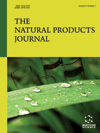
Full text loading...
Cancer is defined as the most prevalent and deadly disease, characterized by the uncontrolled multiplication of abnormal cells and spreading to other body parts. Despite the presence of several antineoplastic drugs, their use is limited due to their severe toxic effects. Vitis vinifera L. or Grapes, one of the most cultivated fruits worldwide, have several pharmacological effects including antioxidant, anti-inflammatory, antidiabetic, etc. This study aims to review the anticancer property of Grapefruit as whole and several parts of the fruit and their respective phytochemicals are obtained from several previously conducted research.
A thorough literature review is performed via several online search engines like Google Scholar, Science Direct, Medline, PubMed, and Scopus, regarding the anticancer potential of Vitis vinifera and its phytoconstituents, possessing anticancer effect.
From several previous types of research conducted, a potent anticancer potential of Grapes was found. From leaves to grape pomace, seed and skin extracts to stems, many evidences were found for their anticancer activity. Other than the fruit or the plant as a whole, some individual active phytoconstituents like Resveratrol, Myricetin -3glucoside, Fisetin, etc., have a wide range of anticancer activity, which was tested against various ranges of cancer cell lines including breast, cervical, lungs, kidney, brain, etc. In the majority of cases, a proper mechanism of their respective anticancer activity was also established. Also, the safety profile of grapes is fantastic with no risk or toxic effect on the body.
Grape seeds, pomace, stems and other parts have shown positive potential for anticancer activity. Several studies signifying the individual pharmacological actions of phytochemicals against several carcinoma cell lines are the prime evidence for future work plans regarding the anti-cancer potential.

Article metrics loading...

Full text loading...
References


Data & Media loading...

